Related Research Articles
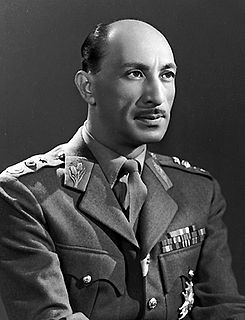
Mohammed Zahir Shah was the last king of Afghanistan, reigning from 8 November 1933 until he was deposed on 17 July 1973. Serving for 40 years, Zahir was the longest-serving ruler of Afghanistan since the foundation of the Durrani Empire in the 18th century. He expanded Afghanistan's diplomatic relations with many countries, including with both sides of the Cold War. In the 1950s, Zahir Shah began modernizing the country, culminating in the creation of a new constitution and a constitutional monarchy system. Demonstrating nonpartisanship, his long reign was marked by peace in the country that was lost afterwards.
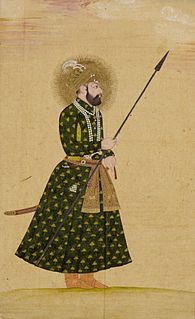
Mirza Mu'izz-ud-Din Beg Muhammad Khan, more commonly known as Jahandar Shah, was the ninth Mughal Emperor who ruled for a brief period in 1712–1713. He was the son of Bahadur Shah, and the grandson of Alamgir. Jahandar Shah ruled for only eleven months before being deposed. In his reign, the Deccan Subah was made almost independent by Zulfiqar Khan Nusrat Jang. Jahandar Shah was deposed by the badishahgar(king-makers), and succeeded by his nephew Farrukhsiyar in 1713 CE.

Princess Mafalda of Savoy was the second daughter of King Victor Emmanuel III of Italy and his wife Elena of Montenegro. The future King Umberto II of Italy was her younger brother.

Inayatullah Khan, was the King of Afghanistan for three days in January 1929. He was the son of former Afghan Emir, Habibullah Khan. Inayatullah's brief reign ended with his abdication.

Qutb-ud-Din Muhammad Azam, commonly known as Azam Shah was briefly the Mughal emperor. He was the third son of the sixth Mughal emperor Aurangzeb and his chief consort Dilras Banu Begum.

Ghazi Amanullah Khan was the sovereign of Afghanistan from 1919, first as Emir and after 1926 as King, until his abdication in 1929. After the end of the Third Anglo-Afghan War in August 1919, Afghanistan was able to relinquish its protected state status to proclaim independence and pursue an independent foreign policy free from the influence of the United Kingdom.

Mozaffar ad-Din Shah Qajar, was the fifth shah of Qajar Iran, reigning from 1896 until his death in 1907. He is often credited with the creation of the Persian Constitution of 1906, which he approved of as one of his final actions as Shah.
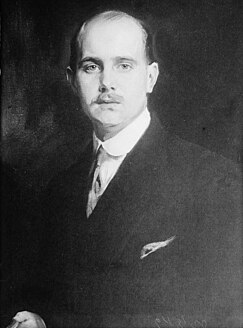
Prince Christopher of Greece and Denmark was the fifth and youngest son and youngest child of King George I of Greece, belonging to a dynasty which mounted and lost the throne of Greece several times during his lifetime. Much of his life was spent living abroad.

Habibullah Kalakani, also known by his nickname "Bacha-ye Saqao" was the ruler of Afghanistan from 17 January to 13 October 1929, as well as a leader of the Saqqawists. During the Afghan Civil War, he captured vast swathes of Afghanistan and ruled Kabul during what is known in historiography as the "Saqqawist period". He was an ethnic Tajik. No country recognized Kalakani as ruler of Afghanistan.

Maulana Ubaidullah Sindhi, was a political activist of the Indian independence movement and one of its vigorous leaders. According to Dawn, Karachi, Maulana Ubaidullah Sindhi struggled for the independence of British India and for an exploitation-free society in India. He was also Home Minister of first Provisional Government of India established in Afghanistan in 1915.

Soraya Tarzi was the first queen consort of Afghanistan as the wife of King Amanullah Khan. She played a major part in the modernization reforms of Amanullah Khan, particularly in regard to the emancipation of women.
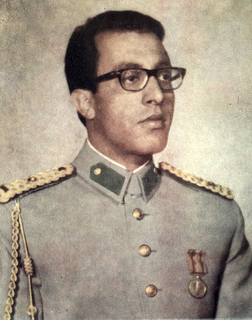
Ahmad Shah, Crown Prince of Afghanistan is the second son of Mohammed Zahir Shah, the former King of Afghanistan. He holds the title of Head of the House of Barakzai since his father's death in July 2007.

The two branches of the Barakzai dynasty ruled modern day Afghanistan from 1823 to 1973 when the monarchy ended under Musahiban Mohammed Zahir Shah. The Barakzai dynasty was established by Dost Mohammad Khan after the Durrani dynasty of Ahmad Shah Durrani was removed from power.

Humaira Begum was the wife and first cousin of King Mohammed Zahir Shah and the last queen consort of Afghanistan.

Maria Letizia Bonaparte was one of three children born to Prince Napoléon and his wife Princess Maria Clotilde of Savoy. In 1888 she married Prince Amadeo, Duke of Aosta, the former king of Spain and her uncle. Maria Letizia became the Duchess of Aosta, as Amadeus was known before and after his kingship as Duke of Aosta. Their marriage was instrumental in almost reviving French hopes of reinstating the Bonaparte dynasty into a position of power, as seen in the days of Napoleon III.
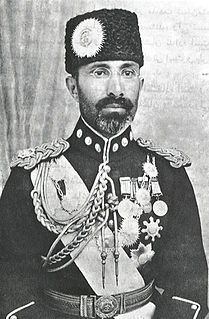
Muhammad Nadir Shah was King of Afghanistan from 15 October 1929 until his assassination in November 1933. Previously, he served as Minister of War, Afghan Ambassador to France, and as a general in the military of Afghanistan. He and his son Muhammad Zahir Shah, who succeeded him, are part of the Musahiban.
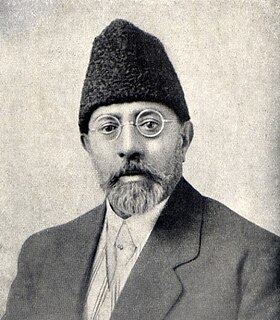
Mahmud Tarzi was an Afghan politician and intellectual. He is known as the father of Afghan journalism. He became a key figure in the history of Afghanistan, following the lead of Mustafa Kemal Atatürk in Turkey by working for modernization and secularization, and strongly opposing religious extremism and obscurantism. Tarzi emulated the Young Turks coalition.
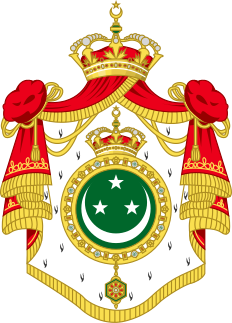
Princess Noal of Afghanistan is the wife of Muhammad Ali, Prince of the Sa'id, the heir apparent to the abolished thrones of Egypt and Sudan and daughter of Prince Muhammad Daoud Pashtunyar Khan, who is the fifth son of King Zahir Shah of Afghanistan.
Sarwar Sultana Begum or, was an Afghan royal consort. She was married to Habibullah Khan, and was the mother of king Amanullah Khan.
Princess Razia Begum Noor Seraj , was a royal princess of Afghanistan.